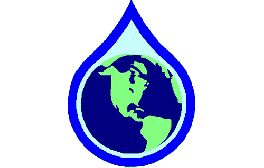A Micro-hydro system can be an efficient way to access sustainable power 24hrs a day, if you have a property that has a water course with a significant drop in height ('Head') between the water source and the location of the turbine.
There are two basic types of system:
- A Reaction turbine that is submerged in the river. This type of turbine has the disadvantage in that it is subject to damage from anything floating down the river i.e. logs.
- An Impulse turbine which is placed out of the water course and water is piped to and from the turbine. This can be placed a 'safe' distance from the water course, however it requires some planning on how the water will be piped to the turbine.
In both cases pipe and cable costs are an important factor and may be more than the turbine costs. In most cases some sort of works will need to be carried out in order to supply water to your turbine. This may be a weir, a dam or concrete pads to hold a hydro turbine down.
You may need approval or licenses from the NSW Department of Primary Industries. Some works can be done without approvals or licenses required. To find out what your options are we have provided some links to the NSW Department of Primary Industries website’s, which will give you information and applications on water use in NSW.
Approvals
https://www.industry.nsw.gov.au/water/licensing-trade/approvals
Water Management Act 2000
https://www.legislation.nsw.gov.au/#/view/act/2000/92
Water Management (General) Regulation 2011:
https://legislation.nsw.gov.au/#/view/regulation/2011/469/full
The following excerpt from the Water Management Regulation 2011 (made under the Water Management Act 2000) indicates that home owners are exempt from requiring an access licence for the purpose of using a water source (ie: hydro) to power a domestic dwelling.
Water Management (General) Regulation 2011 - Schedule 5 - Access Licence Exemptions
8 Domestic electricity generation
Any landholder - in relation to water required for the purpose of generating electricity for domestic consumption on that land, but only if:
- a) the water is returned to the same water source from which it was taken and within 50 metres of the point at which it was taken, and
- b) the returned water is of the same quality as it was when it was taken (in terms of chemical composition, temperature, sediment content and salinity).
Each water sharing plan is unique, however, and we would suggest that you contact your local licensing officer or the 'NSW Office of Water' before commencing.
If you are going to be sharing your creek or hydro operation with others, it's important you get clear before any dispute might occur. Here's a few more titbits from the Water Management Act 2000:
Chapter 2 Water management planning - Part 1 General - Division 1 Water management principles
5 (3) In relation to water sharing:
- (a) sharing of water from a water source must protect the water source and its dependent ecosystems, and
- (b) sharing of water from a water source must protect basic landholder rights, and
- (c) sharing or extraction of water under any other right must not prejudice the principles set out in paragraphs (a) and (b).
5 (4) In relation to water use:
- (a) water use should avoid or minimise land degradation, including soil erosion, compaction, geomorphic instability, contamination, acidity, waterlogging, decline of native vegetation or, where appropriate, salinity and, where possible, land should be rehabilitated, and
- (b) water use should be consistent with the maintenance of productivity of land in the long term and should maximise the social and economic benefits to the community, and
- (c) the impacts of water use on other water users should be avoided or minimised.
Note: Rainbow Power Company does not design, supply or install micro-hydro power systems - try Flowtrack.
